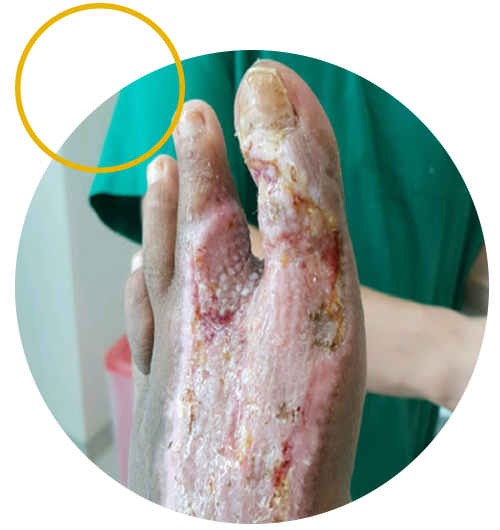There is a wealth of evidence to support the benefits of oxygen therapy on wound healing. Oxygen is required for all major processes of wound healing and wound hypoxia is common. Skin wounds can receive oxygen from the blood stream via perfusion and from oxygen uptake through the skin. Yet, both wound perfusion and blood oxygen levels are frequently insufficient in patients with chronic wounds due to poor circulation, vascular disruption, and vasoconstriction, thereby reducing the wound’s capacity to heal.

Reduced oxygen availability for cell metabolism
Impairs the ability of the cells to generate energy and so may reduce synthesis of proteins, DNA, RNA and cell components.
Reduced synthesis of collagen
Synthesis, cross-linking, tensile strength and maturation of collagen are impaired when oxygen levels are reduced, resulting in delayed healing and reduced scar strength.
Reduced antimicrobial activity
Low oxygen levels impair the ability of immune cells to generate the reactive oxygen species used to prevent bacterial colonization of wound infection. Bacterial growth may use oxygen and worsen hypoxia.
Perpetuation of inflammation
Excessive protease production may occur that delays healing by degrading extracellular matrix and growth factors.
If you or the person you are caring for has a diabetic foot wound or ulcer that is open and is having difficulty healing, you can come in for an assessment.

Make An Appointment by clicking here.

Assessment with our doctors who are specialists in wound healing.

Debridement would be incorporated into the wound care plan, typically in the first stage.

Follow-ups with home nursing option

Better quality of life with closing wound